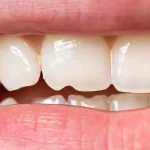Proactive Steps to Minimize the Risks of Vascular Disease
Vascular disease which involves the blood vessels is a major health challenge as it results in heart attacks, strokes, and peripheral vascular disease. Since such conditions are becoming more common in society, it is crucial to implement vascular care to minimize the dangers of vascular disease.
It is therefore important for one to decide on a healthy diet and learn to control the various factors that affect health in a way that reduces the risks of developing vascular complications. Below are some of the most important measures that a person can take to decrease the chances of developing vascular diseases:
Adopt a Heart-Healthy Diet
Diet impacts directly on the status of blood vessels, which is why diets are so important for those who suffer from vascular diseases. A diet consisting of fruits, yogurt, vegetables, whole grain products, lean meat, poultry, fish, nuts, and monounsaturated fats reduces the risk of impaired vascular function.
Simply, avoiding foods with high saturated fat, trans fat, cholesterol, and sodium results in clot formation and atherosclerosis. Intake of products that contain large amounts of fiber like oats, beans, and lentils will also aid in lowering cholesterol levels. Moreover, it is noble to include fish high in omega-3 fatty acids which will minimize inflammation and improve vascular ones.
Maintain Regular Physical Activity
It is recommended to incorporate daily exercise in one’s routine in an attempt to lower the hazards of vascular diseases. Minimum workouts that include moderate-intensity exercise for 150 minutes a week or vigorous-intensity exercise for 75 minutes can enhance the current blood circulation, reduce hypertension, and enhance the heart muscle.
Regular exercise that involves moderate energy levels like brisk walking, cycling, swimming, and running is effective. For fitness and frequency, engaging in aerobic exercises and strength training exercises not less than twice a week would be helpful for better cardiovascular fitness and to help in achieving and maintaining a major weight, thus minimizing the risks of vascular disease.
Manage Blood Pressure and Cholesterol Levels
Increased blood pressure and cholesterol are some of the chief risk indicators of particularly vascular disease. These are factors that need to be monitored and addressed consistently. Nonpharmacologic management of hypertension involves the use of addictive measures including a low sodium diet, avoiding alcohol, and becoming of normal weight.
Sometimes, medication may be prescribed to manage hypertension for those patients whose condition cannot be controlled by lifestyle changes alone. Likewise, by reducing cholesterol intake, lowering one’s fat intake, exercising regularly, and, in some cases, taking medicine, one can be protected from the formation of fatty deposits that can block the arteries to some extent thereby minimizing the occurrence of vascular-related complications.
Quit Smoking and Limit Alcohol Consumption
Tobacco smoking, for example, remains a significant threat to the development of vascular disease that leads to the constricting of the arteries. Smoking cessation is beneficial for one’s health and may cut the risk of vascular disease and enhance other cardiovascular measures.
To successfully give up smoking, seeking help through cessation programs, counseling or medicine could help increase the probability of quitting. Furthermore, concerns are still valid as excessive alcohol consumption is known to cause high working pressure, heart failure, and other vascular complications.











